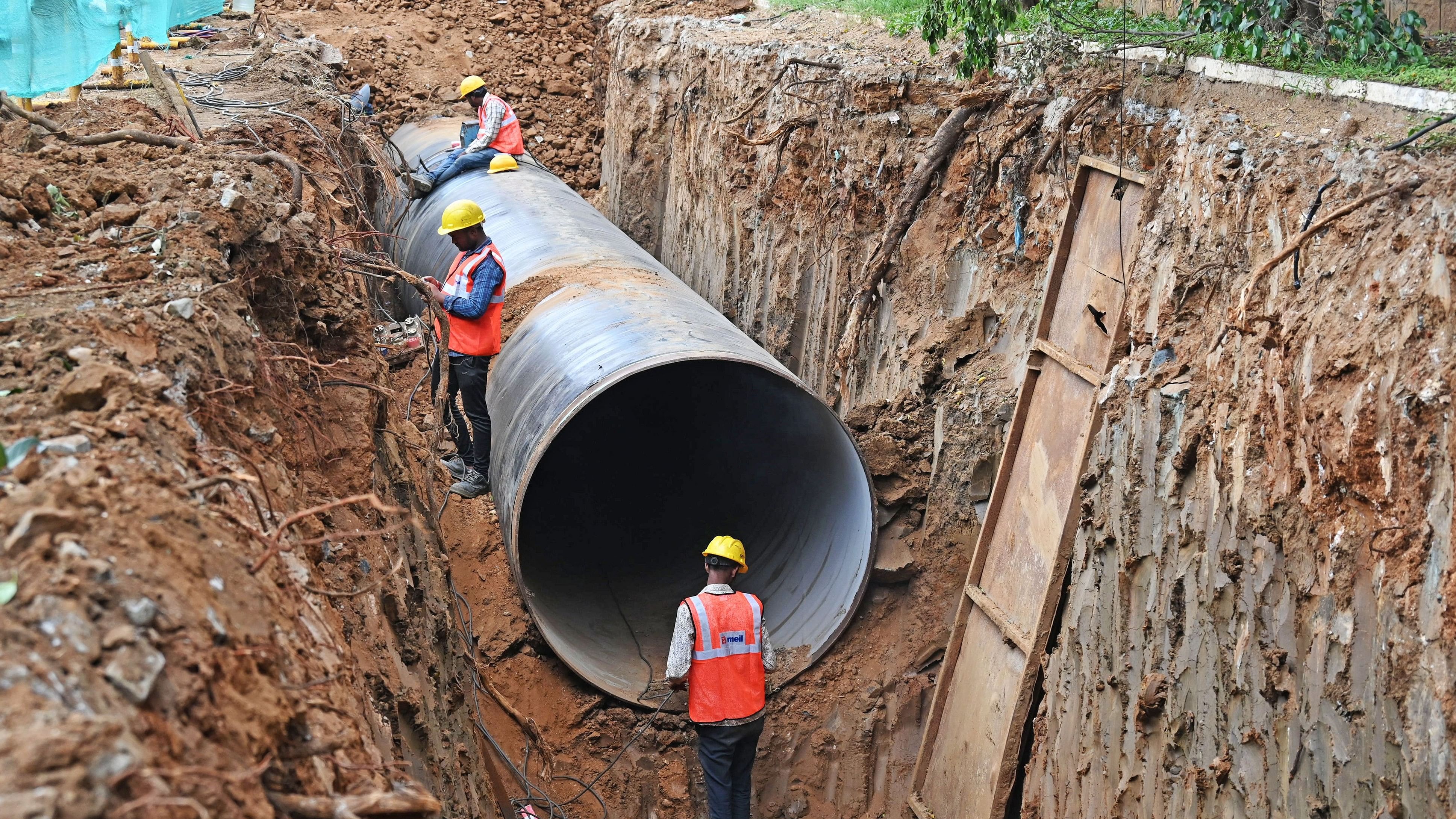
The Cauvery Stage V project work at Kengeri on Monday.
Credit: DH photo
Bengaluru: The vagaries of monsoon, uncertainties popped up by climate change and the long gap of 16 years between demand and supply of water to the people in the 110 villages added to BBMP in 2007 are all indicators for a course correction. The government’s announcement of Rs 7,200 crore-Cauvery VI stage, many fear, shows that nothing will change.
Beneficiaries of the areas coming under Cauvery V stage are happy that their long wait has ended. “Last year, without sufficient rain, our borewells had dried up. Even getting hold of tankers was also very difficult. I hope that authorities are planning to provide water to residents on the outskirts as well,” says a resident of an apartment in north Bengaluru.
A L Kempugowda, a farmer in the Cauvery basin, believes that last year’s drought should provide key insights into the future. “Water from the Krishnaraja Sagar dam is the lifeline to many. Last year, due to the drought, we were able to grow only one crop. Water supply for irrigation was limited because of Bengaluru’s requirement,” he says.
“With the announcement of Cauvery Stage VI, it seems the government is only looking at the KRS dam to fulfil Bengaluru’s growing needs. The city is growing further and ultimately all these resources depend on regular rainfall. At least now, the government should look at other sources,” he adds.
The announcement is also an admission that the 775 MLD water from Cauvery Stage V is insufficient. Cauvery water is treated at Thorekadanahalli in Mandya district in the downstream (mean sea level 600 metres) and pumped to Bengaluru (mean sea level 940 metres). Besides the infrastructure, the project involves substantial energy consumption.
With Cauvery Stage VI, the government targets drawing a total of 2,225 MLD to Bengaluru. Similarly, the Mekedatu reservoir project, estimated to cost Rs 9,000 crore, has been proposed to store excess water during monsoons for release in dry periods.
Water wars
According to a study by global real estate consultancy Knight Frank India, Bengaluru is one of India’s fastest-growing cities. That growth, however, is coming at a cost.
“We have to understand and prioritise the needs of people in the region also and how these projects impact them. One day, there will be disputes like the one we had between Karnataka and Tamil Nadu within the state,” says A R Shivakumar, a senior scientist and water management advisor.
The key for water security is to look at many sources, including the city’s lakes. “For now, they have been used to store sewage water. Groundwater development has to take place and then sustainable withdrawal should be enforced,” says Shivakumar.
He said water prices should be rationalised. “Water is highly subsidised. The government can think of additional tariffs above a certain threshold of water usage,” he adds
Demand-side management
To a question, Bangalore Water Supply and Sewerage Board Chairman Ram Prasath Manohar said big-ticket projects were a supply-side approach.
“With the Cauvery V and VI stages, we will be able to manage until 2040. Beyond that, we have to think about the future. For that, we have to look into the demand-side solutions, also.”
Manohar explains filling lakes with treated water that can be used for non-domestic purposes to supplement some of the water supply. “This can mean that the underground water will be recharged. That will also add up to the supply. Of course we are doing rainwater harvesting, but I think it should be on a more large-scale and widespread basis. These are the small things but they have a long and larger impact on the system,” he adds.